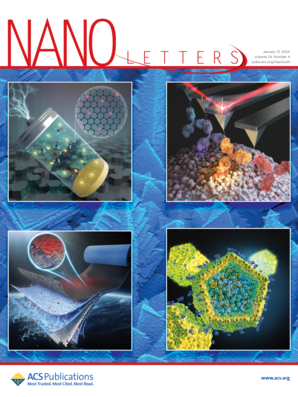High Efficiency Production of Functional Small Extracellular Vesicles through Cellular Self-Motivation
IF 9.6
1区 材料科学
Q1 CHEMISTRY, MULTIDISCIPLINARY
引用次数: 0
Abstract
In stem cell therapies, small extracellular vesicles (sEVs) are extremely limited in application due to their limited production. Here, we propose a new concept of “cellular self-stimulation” and develop a cost-effective method for the preparation of sEVs, which enables the conversion of cellular traction to self-generated stimulation through piezoionic hydrogels and enhances the ability of cells to secrete sEVs by more than an order of magnitude. The traction of the adherent cells leads to deformation of the piezoionic substrate, which in turn translates into a millivolt-level electrical signal acting on the cell itself, stimulating the cell to produce more sEVs. These sEVs remain biologically intact and have shown excellent efficacy in in vitro and in vivo assays, confirming the superior therapeutic potential of high concentrations of sEVs. This provides a strong impetus for the development and dissemination of stem cell therapies.

通过细胞自我激励高效生产功能性细胞外小泡
在干细胞治疗中,小细胞外囊泡(sev)由于其有限的产量而在应用上受到极大的限制。在此,我们提出了“细胞自刺激”的新概念,并开发了一种具有成本效益的制备sev的方法,该方法可以通过压电离子水凝胶将细胞牵引转化为自我产生的刺激,并将细胞分泌sev的能力提高一个数量级以上。粘附细胞的牵引力导致压电基板变形,这反过来转化为作用于细胞本身的毫伏级电信号,刺激细胞产生更多的sev。这些sev在生物学上保持完整,并在体外和体内试验中显示出优异的疗效,证实了高浓度sev的优越治疗潜力。这为干细胞疗法的发展和推广提供了强大的动力。
本文章由计算机程序翻译,如有差异,请以英文原文为准。
求助全文
约1分钟内获得全文
求助全文
来源期刊

Nano Letters
工程技术-材料科学:综合
CiteScore
16.80
自引率
2.80%
发文量
1182
审稿时长
1.4 months
期刊介绍:
Nano Letters serves as a dynamic platform for promptly disseminating original results in fundamental, applied, and emerging research across all facets of nanoscience and nanotechnology. A pivotal criterion for inclusion within Nano Letters is the convergence of at least two different areas or disciplines, ensuring a rich interdisciplinary scope. The journal is dedicated to fostering exploration in diverse areas, including:
- Experimental and theoretical findings on physical, chemical, and biological phenomena at the nanoscale
- Synthesis, characterization, and processing of organic, inorganic, polymer, and hybrid nanomaterials through physical, chemical, and biological methodologies
- Modeling and simulation of synthetic, assembly, and interaction processes
- Realization of integrated nanostructures and nano-engineered devices exhibiting advanced performance
- Applications of nanoscale materials in living and environmental systems
Nano Letters is committed to advancing and showcasing groundbreaking research that intersects various domains, fostering innovation and collaboration in the ever-evolving field of nanoscience and nanotechnology.
 求助内容:
求助内容: 应助结果提醒方式:
应助结果提醒方式:


